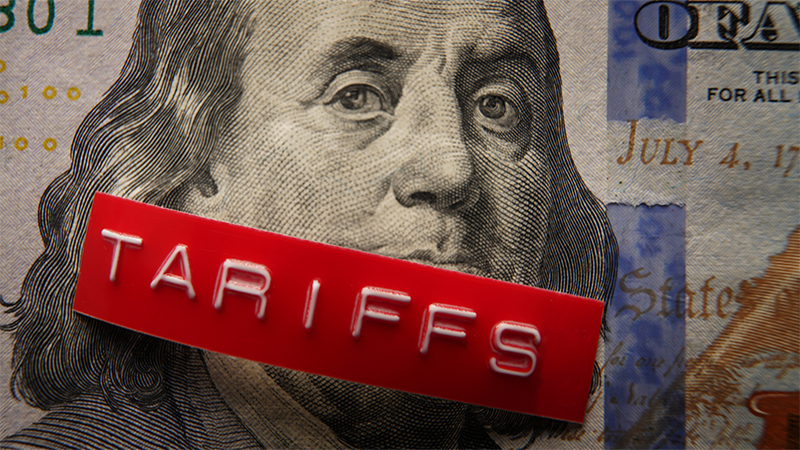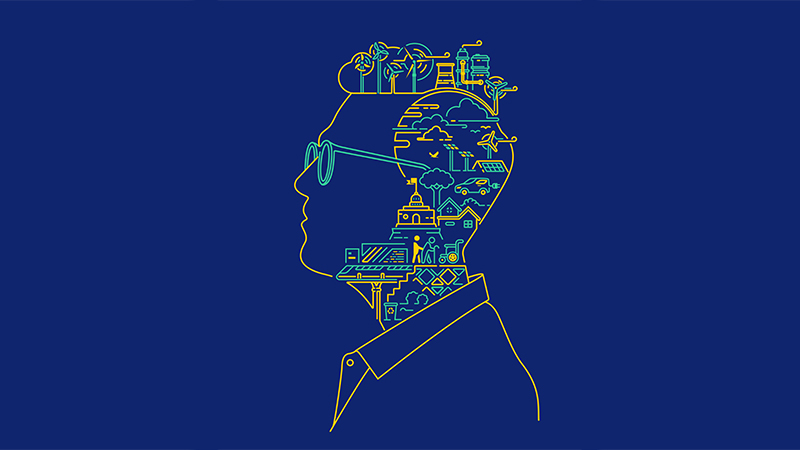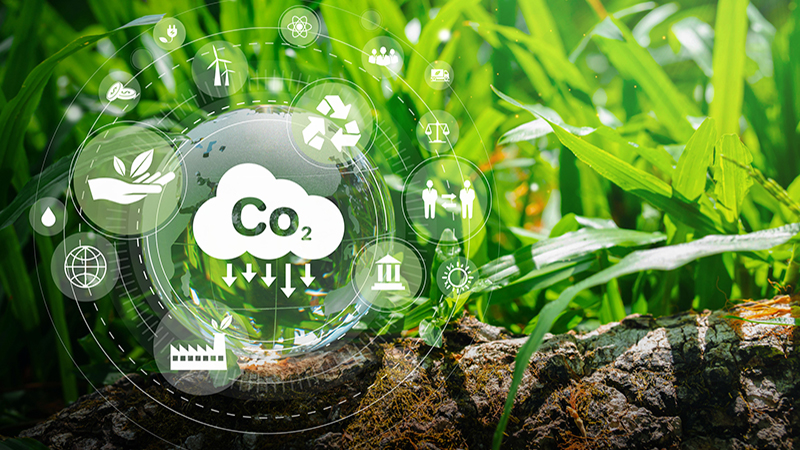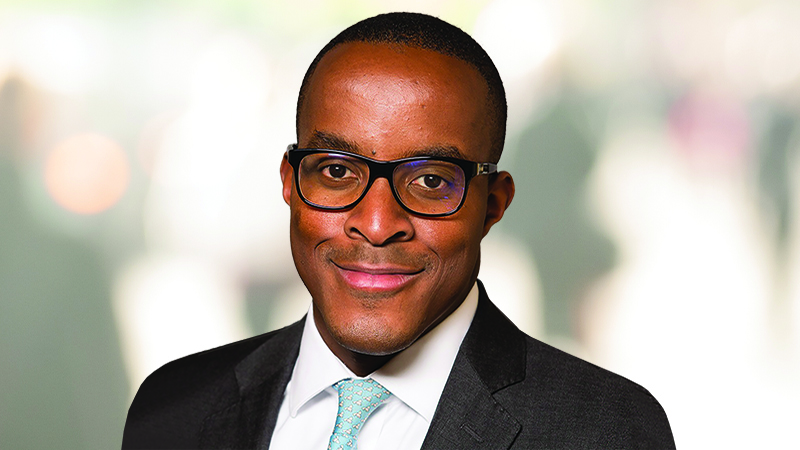Companies that can grow under their own steam is where Carmignac fund manager Obe Ejikeme wants to park his money. And by ‘his money’, Ejikeme doesn’t mean in a figurative sense.
Most of Carmignac’s staff has some sort of long-term investment in the company, “but I take it one step further”, he says. When investors are interested in the FP Carmignac Global Equity Compounders Fund, “I want them to know I am fully aligned with them”.
To that end, Ejikeme has invested his entire self-invested personal pension (Sipp) along with his and his wife’s individual savings accounts (Isas), plus their children’s junior Isas, in it. Such is his conviction in how the fund, which he co-manages with head of equities Mark Denham, is run.
From science to Sicavs
Becoming a fund manager was not always on the cards for Ejikeme, who studied computer science at university. “I came into finance through an unusual route, because they typically hire people with MBAs and business backgrounds.”
His career path veered into financial services when he joined financial data and software firm FactSet after graduating. He then spent seven years at Bank of America Merrill Lynch, where he was head of European equity and quantitative strategy.
“At Merrill Lynch, my day job was to speak to portfolio managers and all the big fund managers about equities: where to invest, in which regions, and in which styles – value versus growth etc.”
Ejikeme’s background in technology has stood him in good stead. As fund management firms become increasingly reliant on screens and filters, tech-savvy people are more in demand.
He joined Carmignac in 2014 as a quantitative equity analyst, later teaming up with Denham to co-manage a trio of funds: two Sicavs and the global equity compounders Oiec. “We think in a very, very similar way, which is why the partnership works so well.”
The Sicavs will achieve a three-year track record in May this year, with the UK-domiciled compounders growth fund hitting the two-year mark in the same month.
Rule one: don’t panic
‘Compounders’ are defined as companies with high sustainable profitability that funnel those gains back into future growth. The £53m fund holds 40-60 stocks. The aim is to invest in these companies for between three and five years. Annual turnover has been no more than three stocks a year.
Per the February 2022 factsheet, the biggest single holding is Microsoft (6.64%), followed by US medical device manufacturer Resmed (3.59%) and Danish pharmaceutical giant Novo Nordisk (3.35%).
Between them, IT and healthcare comprise just over 58% of holdings. Since inception in May 2020, the benchmark-agnostic fund has returned 30.35%. For context, the MSCI World Index was up 37.3% over that period.
But growth investing and technology stocks both started 2022 with a bump, so it’s not surprising to see the fund under-perform at the beginning of the year. This, combined with rising inflation and the Russian invasion of Ukraine, has seen the compounders Oiec down by 13.61% over the two months to the end of February. The MSCI World Index was down 6.81% over the same period.
“As fund managers, the one thing you definitely don’t do is panic,” says Ejikeme. “We’ve had a difficult start to the year because of this rotation away from growth to value, with investors chasing commodities and cheap stocks.
“We had three of these last year: the first one peaked in March, the second in May and the third in October. But, at the end of the year, those same companies traded on relative lows.
“These ‘anti-growth’ rotations are often short. You have to be careful because of the style of these value companies, they always seem to come unstuck.” But investment style is far from the only concern investors are facing at the moment.
“There is a lot of fear today about inflation being high. But rule 101 of investing is inflation is always a lagging indicator of the cycle. The point at which you’re worried about inflation is typically the point at which it’s not the thing to be worried about.”
The outlook for growth, “which has been a problem in the last 10 years and is going to continue to be a problem”, is a much more important topic of conversation, he says.
Drowning in debt
Beyond understanding a company’s growth prospects, Ejikeme wants to know how that growth is being funded.
With borrowing having been incredibly cheap for the past decade, investors in debt-laden companies with low growth prospects should be worried. “As a simple measure, we look at the percentage of companies in the S&P 500 that have net debt of greater than four times Ebitda. That gives us a measure of the percentage of the market that will come into distress if interest rates start to go up.”
He adds: “The overriding philosophy of the fund is we only invest in companies that can grow under their own steam and have done over the past five years. Secondly, we make sure we don’t invest in companies that have got significantly high debt levels.”
Currently, net debt to Ebitda in the fund is around 0%, he says. “In fact, 40% of the companies we own are net cash, versus the market which is about 1.5%.”
Keeping it sustainable
The global equity compounders fund was also set up with sustainability at its heart. “We are specifically focusing on companies that we believe will have a positive outcome on society.”
In aggregate, 82% of the stocks in the portfolio generate more than half of their revenue from one of the United Nations Sustainable Development Goals, Ejikeme says.
“UK investors are getting their heads around this, but in Europe it is critical. When investors see sectors that we don’t own performing well, for example energy or materials, they understand because they know investing in those companies doesn’t match with our sustainable criteria.”
The fund will not invest in companies with an MSCI ESG score of CCC or below. Just over 30% of holdings in the fund have a AAA rating, with a similar number sitting at AA.
Want versus need
Ejikeme says the “biggest anomaly” in the market this year “is the massive disconnect between what the credit market is doing versus the equity market”.
“The equity market has been rewarding companies with debt, while the credit market has been penalising them for it.”
He adds: “Despite all the stories about rate hikes, we haven’t seen the equity market adjust in the same way as the credit market. But I think that will be another story for the rest of the year.”
This inconsistency, against a macroeconomic backdrop littered with conflagrations of various sizes all competing for attention, strengthens the case for investing in companies with high sustainable growth that don’t carry significant debt, he adds.
“You’ll be better positioned for periods of uncertainty, like the one we’re heading into now.”
Beyond sustainable growth and low debt, another stockpicking filter the fund is deploying at the moment is looking at whether a company produces a product that fulfils a genuine need. Since the global financial crisis, there have been four slowdowns, “all of which have ended the same way”, Ejikeme says.
“With defensive equities doing very well. When times are really, really tough, people focus on the companies we need rather than ones that we want.”
Consumer staples account for just over 10% of the fund, which includes a 2% position in Colgate. “It provides products and services we believe that consumers will need versus owning, say, an auto company.” The fund has no exposure to hypercyclical sectors like energy, banks and materials given their “significant sensitivity to the global macro cycle”.
“Three to four-year cycles traditionally give you 18-24 months on the way up and the same on the way down, on average,” Ejikeme says.
“I think we’re just short of five months into things going downhill. So, using my 18 to 24-month analogy, we have at least six to 12 months, if not potentially more, of the market getting used to a slower growth environment.”
Work to make the compounders fund more defensive started last summer. “We are making subtle changes to ensure we are positioned for where investors are going to need to be in the next six to 12 months.”
US-led global slowdown
Profit growth across the S&P 500 was 50% last year and is predicted to drop to 10% this year, he says. “That is the biggest slowdown in US profits since coming out of the financial crisis in 2010. That kind of deceleration requires a very different portfolio, which is why we started to reposition as early as last June.”
But pivoting away from the US to, for example, the unloved and ‘cheap’ UK is not necessarily an option.
With the highest-quality part of the equity market on course for a significant slowdown, Ejikeme says investors should expect other parts of the markets “to slow a lot more”. “You can buy a cheap set of tyres, which is great until it rains. Then you wish you had paid more.
“Most companies on low valuations are typically cheap because they are cyclical. They’re very sensitive to global growth cycles and if growth is slowing you will find out at the bottom why they’re cheap, which is probably because they have significant amounts of debt.”
Buying opportunity
The constant barrage of negative headlines has succeeded in driving consumer and retail investor sentiment to levels not seen since the global financial crisis.
“My peers in the professional investment community have also never been as bearish on the outlook for growth as they are right now. When I’m in discussions with clients thinking about investing, this looks like a huge buying opportunity for those who are long-term-focused.
“If you are a long-term investor, this is the time to be adding to your exposure.”
This article first appeared in the April edition of Portfolio Adviser magazine.










